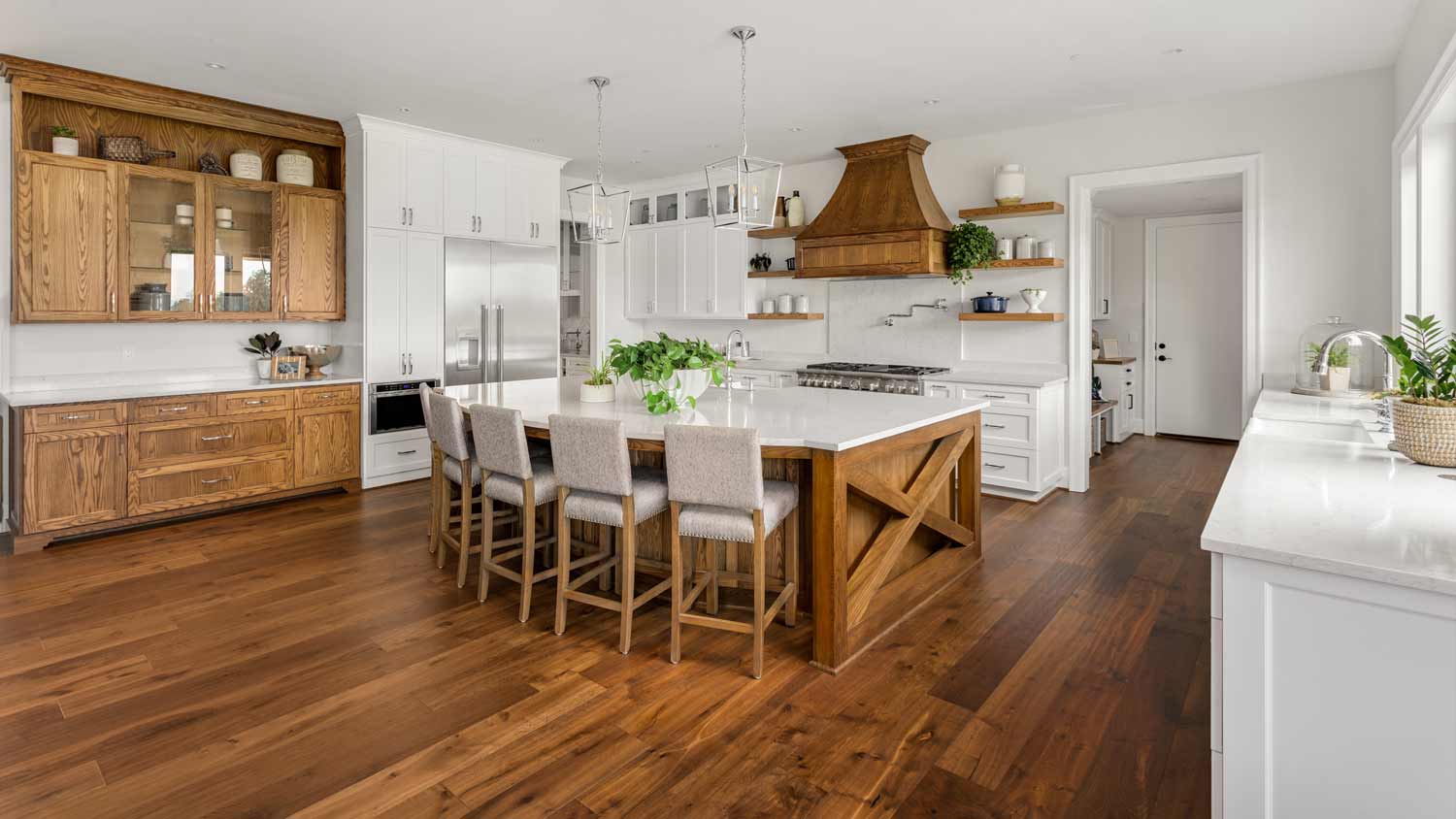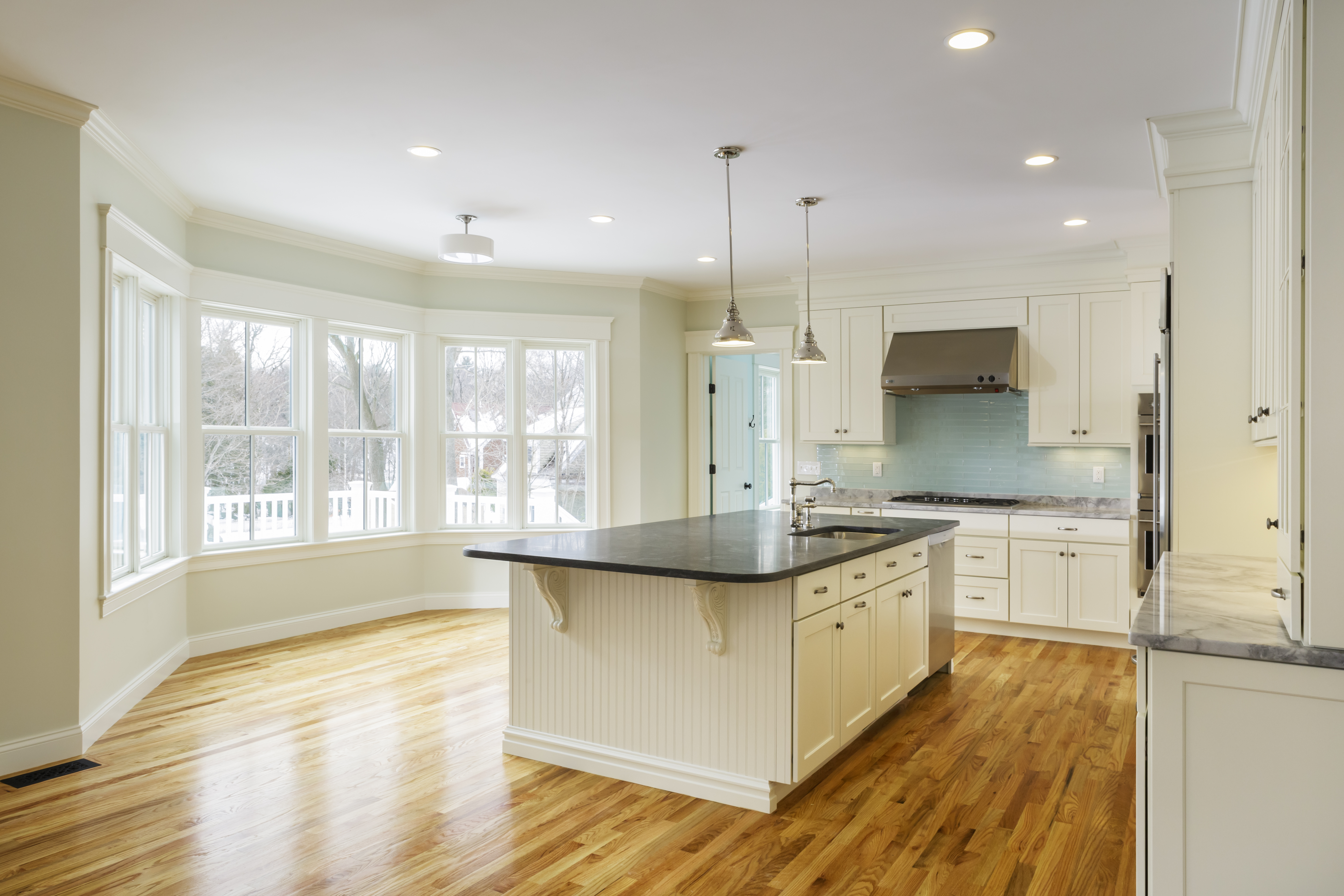
Hardwood floor repair costs depend on the problem. This guide breaks down common costs based on factors like the type of problem, repair method, and whether you hire a pro or DIY.
Say goodbye to scratches with a simple machine and a few basic supplies


If your hardwood floor has seen better days, you might think you have to sand it down or replace it entirely. Don’t be discouraged, though, because buffing can take care of light scratches and scuffs. Although buffing is time-consuming, it isn’t as complex, messy, or expensive as the alternatives. Learn how to buff a hardwood floor to give it a smooth finish and lustrous sheen.

Buffing only works to lift light marks that have penetrated the thin protective layer, such as polyurethane, on top of your timber. Think of it as an exfoliating process. You won’t be able to remove deep scratches gouged into the surface of the actual wood, but you can smooth away any small imperfections that may have built up over the years.
Hardwood floors with a penetrated finish like a stain won’t have the surface layer on top that you can buff up. Any scratches will be directly on the timber. For these, you’ll need to refinish the flooring by sanding it down or just replace it.

Although you can buy a stand-up floor buffing machine, they are expensive (at least $500), and you won’t need to use one often. It makes more sense to rent one instead from your local home improvement store as this costs less than $50 per day. Handheld buffers are also available for small spaces.
There are two types of stand-up buffing machines: spray and dry. The spray type is the one most often used for home jobs. The buffer rotates at a speed of up to 1000 RPM, and it uses a polishing solution on the buffer pad to remove scuffs and produce a shiny luster.
Dry buffing machines are more powerful but are more challenging to handle. They are more commonly used by professionals or in a commercial setting. If you hire a professional to buff the floors of a large room, they may use this type of machine. Professionals charge at least $100 to $300 for floor buffing services, depending on the size of the room.
You often need to buy the finishing product and polishing pads separate from the machine rental. Ensure the pads are high quality to avoid any issues with removing too much of the surface layer. Do some online research or ask the machine rental associate for help to find the best equipment for your floors.

You’ll want to clear the space you plan to work in. Remove furniture and clutter, lift curtains, and remove any floor vent metalwork. These high-speed machines can cause damage if they accidentally scuff furniture or walls, and you need a clear path to achieve a smooth finish.

Thoroughly clean and dry the floor before any buffing begins. Debris and dirt can cause an uneven finish, discoloration, issues with even polish absorption, and the final shine could be less impressive.

Using gloves, a mask, and safety glasses is sensible, and be aware that the finishing solutions can be toxic and produce noxious fumes. The room should be well-ventilated. While they’re easy to handle, floor buffing machines operate at high speeds and have impressive power. Be extra careful when using one to minimize the chance of injury.

When using a spray buffer machine, you need to apply the finishing solution to the floor before going over it with the buffer. You can either apply this with a mop, or, for an easier, uniform, and light application, you can use a spraying applicator designed for this job. The sprayer is particularly helpful if you’re buffing a large space. If you want an especially glossy shine, you can apply a second spray of the solution after buffing in the first light mist.

Having a smooth technique and planning your route will help to simplify the process of refinishing the floors without sanding. Always use a light, sweeping motion that is as smooth as possible and work from left to right across the room. Be careful of applying too much pressure when working close to the room’s baseboards. You don’t want to let the buffer stay in one spot too long—this can cause burn-like marks.
Work backward so you don’t trap yourself in the room, and consider the electrical outlet you plug the machine into—positioning it behind you. You may wish to go over the floor twice to ensure you’ve covered every section properly. Replace the polish pad if it suffers from any tears or becomes thick with the finishing solution.

Once you’ve finished buffing a wood floor, it’s best to allow 24 hours before returning all the furniture to the room and using it as normal. Light footfall after one hour, however, shouldn’t be a problem.
To keep your floors in tip-top condition, be careful not to drag any furniture across the floor and consider using pads underneath any heavy pieces to prevent future scrapes and scuffs. When cleaning your hardwood floor, don’t soak it with water and make sure you use appropriate and gentle cleaning products.
If buffing hasn’t lifted off the scratches or scuffs the way you had hoped, it may be time to call in a local wood floor refinisher. They can assess if there’s a requirement for sanding.
Buffing hardwood floors addresses superficial damage to the sealant layers. The process offers benefits that, at times, make it a better option than refinishing, including:
Repairing floors with damage only to the finish layer
The option to buff only the areas with damage (no need to buff the entire floor if it’s not damaged)
Less expensive and time-consuming than more in-depth repairs
The end result can renew floors with light damage, potentially saving you from more expensive repairs down the road.
If you’re a handy homeowner, buffing your hardwood floors is a project you can likely tackle on your own. As mentioned above, purchasing a stand-up floor buffing machine costs about $500, but you can also rent one for around $50 per day.
However, there are distinct benefits to hiring a pro. Wood floor installers near you have extensive experience in buffing and refinishing floors. While you might be able to figure it out, they have the equipment and skill to leave behind professional results. They can also offer an assessment as to whether buffing will address the floor’s imperfections or if you may need to consider refinishing to remove deeper damage.
This company does it right. Firstly, I want to say that Landan was a joy to work with. He was so kind, transparent, and had everything under control. His entire team showed up ready to work and they were all very respectful of the fact that we were in an office space. A little backstory – we...
Window Depot did an amazing job on my deck. I wasnt sure what I wanted to do, but their composite decking was affordable and will last a long time. I am excited to have family over, and I am no longer embarrassed by my backyard. Jeff and the ground crew were polite, respectful, and caring for...
Storms Mobile Welding was great to work with. They were prompt, professional and did an overall excellent job on the project. I highly recommend.
AFS was excellent from start to finish. Jess, the sales associate, was fantastic...very knowledgeable and very professional. The installation crew was excellent. I couldn't be more pleased with the process. Best of all, my new floor looks fantastic!
It was wonderful working with Yordy and his team. They were very professional and are experts in what they do. They have completed the work on time, with better quality and with in fairly reasonable price. We just started with backsplash work , but liking his work, we went on to provide...
We used Unique Hardwood Floor LLC three years ago to work on the floors of a 70 year old home that needed a great deal of work. Some floors needed repairs, some were replaced and others just needed to be refinished. It was a complicated job as they needed to blend the old and the new to...
We hired Jim to replace our hardwood floors with new hardwood. He and his helper Jerry did a fantastic job. Their work ethic is impeccable!! We would highly recommend McColl Floors!
Description says they handle window repair including rotten hardwood - they called me back right away but didnâ t leave a voicemail. I followed up 3 days later and they said they donâ t do that kind of work.
Cleaned the largest basement bathroom very well - excellent job. Also cleaned the half bath, which is the smallest bathroom very well. Did an average job on the 2nd floor bathroom, and did not get to the floor. They never got to the 3rd floor bathroom. They asked if I wanted them to dust,...
I found getting scheduled to be much easier than I had expected. I had company coming in town the following week and thought I would use that as an opportunity to have the house cleaned by a professional. Before purchasing this deal, I had read in some of the reviews about confusion from...
From average costs to expert advice, get all the answers you need to get your job done.

Hardwood floor repair costs depend on the problem. This guide breaks down common costs based on factors like the type of problem, repair method, and whether you hire a pro or DIY.

Here’s what you should expect to pay when renting an orbital, drum, vibrating, or edging floor sander—as well as where you can rent them and what else to know.

Both materials and labor determine hardwood floor installation costs. This guide breaks down all the prices you need to know before starting your new flooring project.

When properly maintained, hardwood floors can last a lifetime. Discover why they last so long and how to maintain your hardwood floor for the maximum life span.

Your new floor installation seems off, but you don't know for sure. Here are six signs of a bad hardwood flooring installation to look out for.

You can install hardwood floors over concrete, but you need to prepare the surface properly and install the right vapor barrier.